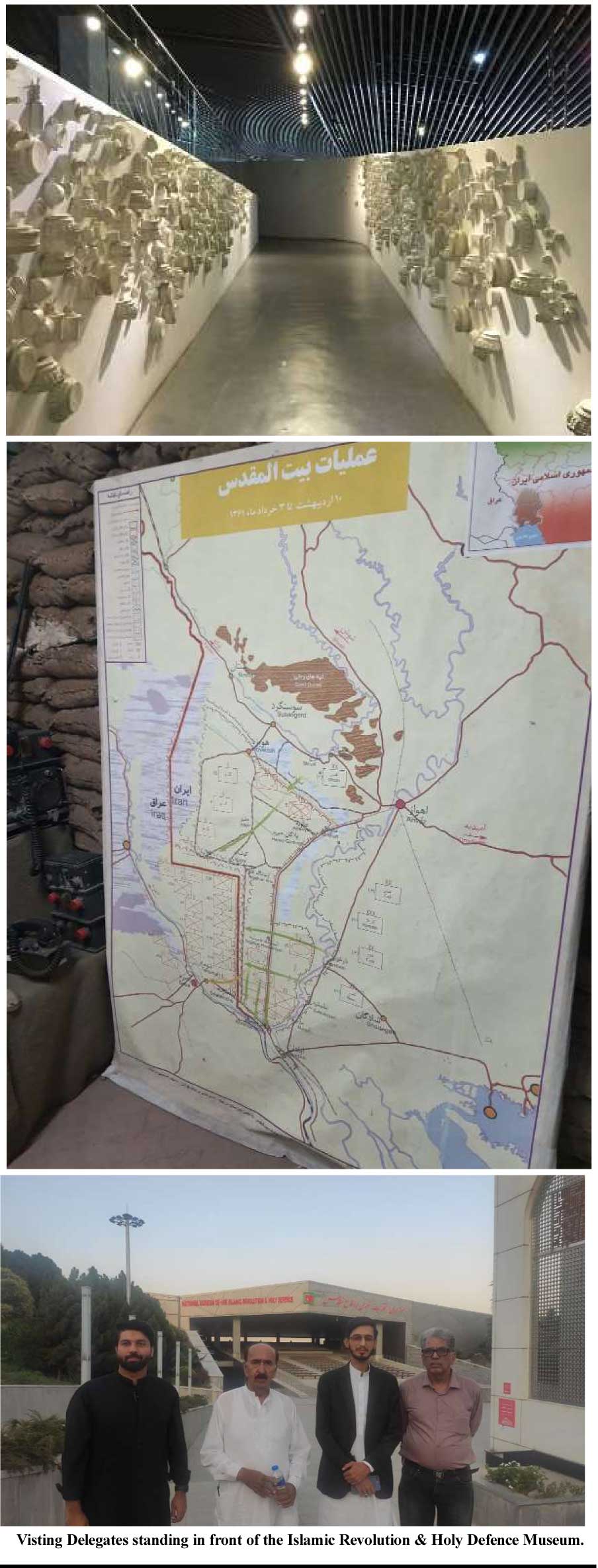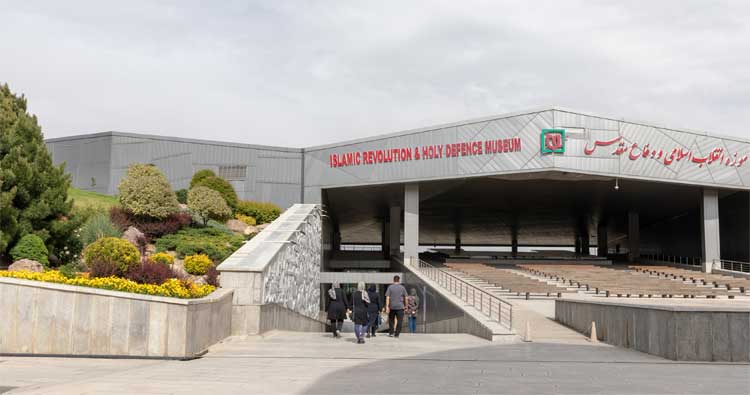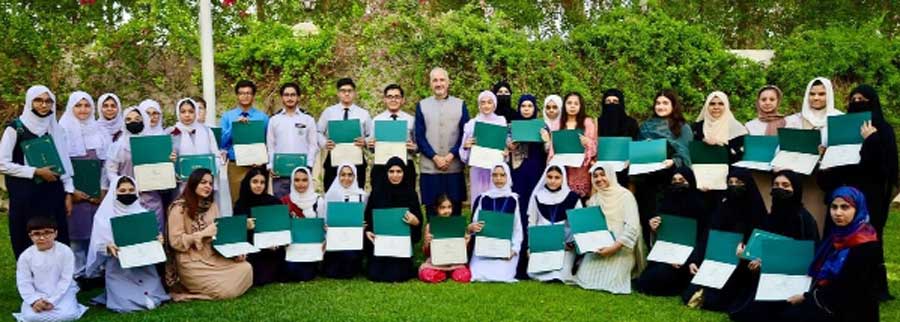
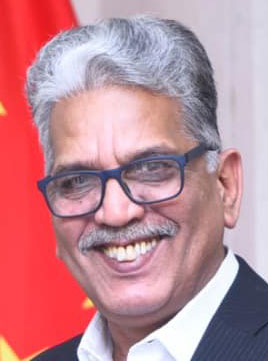
Our third visit to Iran was nothing short of extraordinary, as we had the privilege of immersing ourselves in the rich history and culture of this fascinating nation. One of the highlights of our journey was our visit to the Museum of Islamic Revolution in Tehran, a remarkable institution that serves as a testament to the enduring impact of the Islamic Revolution of Iran. We will delve into our unforgettable experience at this significant cultural institution and shed light on the history and legacy it showcases.
A Tribute to the Islamic Revolution
The Museum of Islamic Revolution is not just a museum; it is a tribute to the leaders and martyrs of the Islamic Revolution and a testament to the indomitable spirit of the Iranian people. This institution plays a crucial role in preserving the memory of the revolution, ensuring that the sacrifices made and the ideals upheld during those tumultuous times are never forgotten.
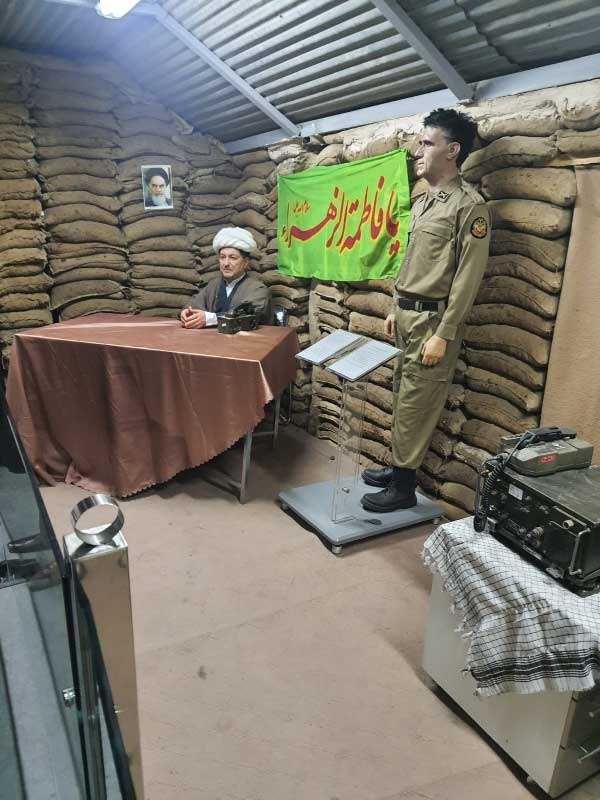
The museum houses an extensive collection of artifacts, photographs, documents, and multimedia exhibits that provide a comprehensive overview of the events leading up to the revolution and its aftermath. It is through these exhibits that visitors can gain a deeper understanding of the ideological, social, and political dimensions of this transformative period in Iran’s history.
Exploring the Museum
As we entered the museum, we were immediately struck by its striking architecture and the sense of reverence that permeated the air. The museum’s design itself seemed to pay homage to the revolution, with its grandeur and symbolism evoking a sense of pride and nationalism.
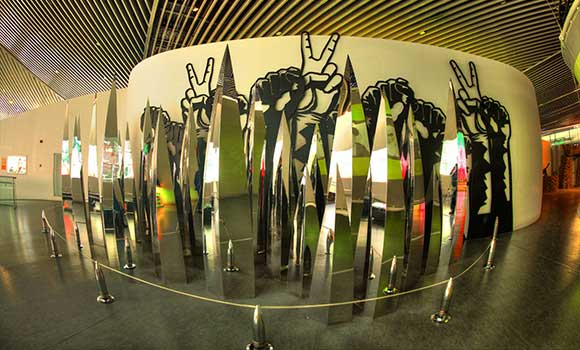
The galleries within the museum are thoughtfully curated, guiding visitors through a chronological journey of the revolution. We were able to witness the fervor and passion of the Iranian people during this period through a captivating collection of photographs and videos that captured the spirit of the time. The personal stories of individuals who played pivotal roles in the revolution were particularly moving, offering a glimpse into the human side of this historical upheaval.
One of the most poignant sections of the museum is dedicated to the martyrs who gave their lives for the cause. Portraits, personal belongings, and stories of these heroes serve as a reminder of the sacrifices made in the pursuit of a new Iran.
A Tribute to Faith
As we reached the end of our visit to the Museum of Islamic Revolution, we were in for another remarkable surprise. We crossed the artificial Pul-e-Siraat, a symbolic bridge often referred to in Islamic tradition, and entered Janatul Firdous. Here, we encountered replicas of Roza Imam Hussain (A.S) and Hazrat Abbas (A.S), two revered figures in Shia Islam.
This addition to the museum was a touching tribute to faith and spirituality, serving as a reminder that the Islamic Revolution was not just a political movement but also deeply rooted in the religious beliefs of the Iranian people. It was a poignant moment, reflecting the multifaceted nature of the revolution and its enduring impact on Iranian society.
Our visit to the Museum of Islamic Revolution was a journey through time, offering us a profound insight into the history and legacy of the Islamic Revolution of Iran. This institution stands as a testament to the resilience and determination of the Iranian people and serves as a reminder of the sacrifices made in the pursuit of justice and freedom.
As we prepare to share our detailed exploration of this remarkable museum back in Karachi, we cannot help but reflect on the importance of preserving the memory of pivotal historical moments. The Museum of Islamic Revolution of Iran does precisely that, ensuring that the lessons and ideals of the revolution continue to inspire future generations. It is a place where history comes alive, and where the spirit of the revolution lives on.
According to thought provoking Urdu piece of Mr Nazir Leghari about t Museum of the Islamic Revolution, following is its translation.
As we moved forward, we saw a building ahead, on which were written the words in Persian, In English, it also read “National Museum of Islamic Revolution & Holy Defence.” This marvel house contained documentary and real artifacts from two significant events that were unfolding before us once again: the Iranian Revolution and the Iran-Iraq War.
45 years ago, when the revolution reached its peak, the world’s attention was focused on Tehran. The global press and the public were also keeping an eye on the holy city of Najaf in Iraq, where Ayatollah Khomeini, the central figure of the revolution, had captivated the world’s attention.
Inside this marvel house, the events of the revolution were displayed sequentially on various screens.
We entered the vicinity of the marvel house on foot from Tabiat Bridge. There, Reza Shabani, through an elevator, took us to an underground shelter, where we were humbly served with tea and cake among others. We weren’t the only ones there; hundreds of men, women, and children were also present in this tea house. After tea, we ascended to an upper floor via the elevator and arrived directly in the valley of the revolution. The revolution was unfolding right before our eyes. Film footage of the events was playing on numerous TV screens. Thousands of protesters from the University of Tehran were outside, chanting slogans in support of the revolution and against the Shah. Despite Shah’s attempts at securing his position with his loyal and well-paid military, the fear of the advancing revolution was evident on his face like a storm.
In Najaf, Ayatollah Khomeini appeared with a resolute and deliberate tone, tearing apart the cruelty and barbarism of the Shah in a slow, deliberate manner. The revolution had reached Tehran’s Freedom Square, and the uproar against imperialism, colonialism, and the Shah was echoing in all directions, spreading throughout Iran’s vast expanse.
We were witnessing the tremors of Pahlavi monarchy, which had celebrated its glory just nine years ago in 1979 when leaders from across the world, including republicans, non-republicans, absolute rulers, socialists, and communists, kings, queens, and prime ministers had gathered. I was amazed by the fact that the Secretary-General of the Communist Party of the Soviet Union, Brezhnev, had attended the celebration of Iran’s 2,500th monarchy. But now, the monarchy was trembling, shivering, and quaking towards its inevitable downfall. The divine shadow and asylum could not be found anywhere.
The revolution surged like a mighty flood through the streets of Tehran, Isfahan, Shiraz, Qom, Mashhad, Abadan, Kashan, Kerman, and other cities. In the roar of slogans against the Shah’s reign, the masses surged forward, shifting from right to left like waves. Tear gas, tear gas, and the sound of bullets could be heard. Bullets were scarce, but chests were expanding. One revolutionary would fall, and another would take his place.
From January 7, 1978, to February 11, 1979, the revolution spread through every city, every street, every lane, and every village of Iran, moving forward continuously. Inside the marvel house, the revolution was advancing like a story, a narrative, and a film. During this period, there were continuous demonstrations, strikes, riots, public resistance, armed struggles, and the endless echoes of freedom slogans.
Ayatollah Khomeini was exiled to Iraq. In August 1978, a fire at the Rex Cinema in Abadan claimed the lives of hundreds. The Shah’s secret agency, SAVAK, was distributing death sentences.
We witness an extraordinary scene on January 16, 1979. Before this, Shah had made a final attempt to control the situation by appointing Shapour Bakhtiar as Prime Minister, which had failed. Now, Tehran’s Mehrabad Airport presents a startling and thought-provoking sight. The heir of a two-and-a-half-thousand-year-old empire, the king of kings, the absolute ruler of Iran, is fleeing the country without a designated destination, leaving behind his wife and children. This moment, captured on the screens of the wonders museum, encapsulates centuries of history. The Shah is unwilling to seek refuge in the United States, the United Kingdom, France, Germany, or any other country. The sanctuary of the world is fearing sanctuary; the plane is ready for takeoff. Ahead lies an expansive void with no destination. Is this a house of wonders or a place to relive events and the history of the revolution with their original documents?
Reza Shabani leads us to the second part of the wonders museum, where scenes of the horrors of the Iran-Iraq war unfold. Forces of the revolution and counter-revolution travel together. The first Gulf War saw the emergence of the Soviet Union’s influence amid the flames of the Great War. The Chinese Revolution took place between the China-Japan wars. The Vietnamese Revolution emerged directly with the end of the war with America. The Iranian Revolution had not even passed a year when it had to face a protracted eight-year war. I am among those who witnessed the painful events that lay ahead. In Pakistan, Zulfikar Ali Bhutto has been hanged. In Afghanistan, every effort is being made to thwart the failure of the Saur Revolution. The flames of the guerrilla war are spreading there, and just one year and seven months after the success of the Iranian Revolution, a war is imposed there. Iraq is shown dreaming of seizing control of the Shatt al-Arab. Saddam Hussein wants to become a steel man in Iraq after slaying his predecessor Hassan al-Bakr. He turns bloodshed into his occupation. He wants to solve every issue in Iraq through force and coercion. He is eager to build palaces for himself in Baghdad, Tikrit, and other cities. He wants to be a symbol of power and oppression. The eastern bank of Shatt al-Arab is historically part of Iran, but he wants to seize it and become a regional bully or a power broker for some authority. He is given axes and promotion for war. He is made to understand the difference between Arab and Persian. He spent his youth during the time of Gamal Abdel Nasser in Egypt, aspiring to be a new Gamal Abdel Nasser of the Arab world. In 1975, he tore up the Iran-Iraq treaty, which recognized the eastern bank of the Shatt al-Arab as part of Iran.
I have read the fresh account of the horrors of this war in a two-volume, over a thousand-page book called “Mother” by an Iranian Kurdish woman named Sayeda Zahra Hosseini. This book was given to me by Dr. Saeed Talebinejad in my office. In this book, the eyewitness accounts of the harrowing events of the Iran-Iraq war are described in detail. Sayeda Zahra Hosseini spent her childhood in the coastal cities of Basra in Iraq and Khorramshahr in Iran and witnessed the first apocalypse of the Iran-Iraq war from Khorramshahr.
The Wonders Museum recreates the scenes of devastation in Khorramshahr, Abadan, Ahvaz, Dezful, Ilam, Kermanshah, and Qasr-e Shirin, as well as the environment created by the war monuments. We are placed in the extreme conditions of both hot and cold in the upper and lower war sections, where we begin to shiver from the cold and perspire from the heat. Further, the Control Room of War is displayed, with a portrait of Ayatollah Khomeini on the right, and the imposing statue of the commander-in-chief of the Iranian armed forces appears ready for war. On the left, there is a wax statue of President Ali Akbar Hashemi Rafsanjani in the Control Room. It seems that President Rafsanjani is issuing war directives from the Control Room.
Further inside, there are images of Iranian martyrs of the Iran-Iraq war. It is mentioned that these are Iranian Jews, Christians, Zoroastrians, Parsis, and other non-Muslim citizens who sacrificed their lives defending Iran. The gallery also includes the images of Tehran city residents who sacrificed their lives while defending the homeland. This wonders museum is not just a place; it is the war’s specter, the war’s atmosphere. It is a war space. It is a land of fire and blood from where there is no escape.
We exit the museum and turn left onto a road. On the right side, the sprawling complex of the same wonders museum stretches, while on the left, there is a parade of various cars, jeeps, trucks, and military vehicles. These vehicles were either confiscated from the Iraqi army or belonged to Iranian scientists, military officers, or military experts, which were targeted by the Iraqi army. To the right, alongside the building, there is a long procession of Iraqi military aircraft, helicopters, or tanks that were captured by the Iranian army during the war.
We continue moving forward, and now some of the military statues are still waiting for orders. Thirty-five years have passed since the end of the war, but its effects and symbols still echo within the human body.
